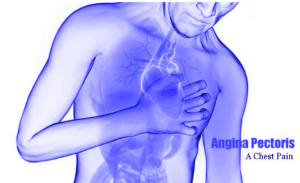Table of Contents

Definition:
Angina Pectoris is a medical term for chest pain or pain due to heart disease. It occurs when the heart is not getting enough blood, possibly due to the blockage of one or more coronary arteries.
As a result of insufficient blood flow to the heart, the heart cells lose their oxygen and begin to die. When a large number of heart cells die, a person dies.
Angina Pectoris is also known as stable angina and is one of the most common types of angina. Stable angina has a predicted pattern of chest pain.
Separation of angina pectoris
The different types of angina pectoris are:
- Stable Angina
It is the most common form of angina in which symptoms often appear such as chest pain and shortness of breath as you climb stairs. The symptoms are most noticeable in the event of a strain.
- Unstable Angina
Symptoms are rare but very severe. Chest pain lasts longer than usual and needs immediate evaluation. It is more likely to be a precursor to cardiac arrest.
- Microvascular angina
Although this has angina-like chest pains, the causes are different. It occurs due to a lack of efficient blood vessels in the heart, legs, and arms. In such cases, diagnosis is difficult.
Even if angina Pectoris can lead to physical abuse, a person should not lose his or her life. It is a sign of possible death as a cardiac arrest.
Problems with Angina Pectoris
Causes of oxygen deficiency and coronary heart disease. Cholesterol may be absorbed into the arteries and formulate cholesterol plaque. The accumulation of such plaques causes narrowing of the arteries. Such a condition prevents the circulation of oxygen-rich blood. Angina or chest pain is caused by a lack of oxygen.
Symptoms of Angina Pectoris
The main signs are –
- Feeling pressure, stiffness, heaviness, or chest pain.
- The pain may extend to the arms, neck, jaw, and back.
- Heartburn
- Constipation
- Weaknesses
- Nausea
- Sweating
- Shortness of breath
Angina can also be exacerbated by medication, overactive thyroid changes, vasodilators, and polycythemia, among others.
Types of Angina
There are many types of angina. The most prominent are:
- Severe Angina – Also known as Angina Pectoris.
- Chronic Angina – This condition is characterized by unexpected chest pain at rest. Unlike stable angina, unstable angina occurs unexpectedly. It also changes with frequency and can get worse over time.
- Alternative Angina – Also known as Prinzmetal’s variant angina or Angina inversa. It is rarely common and usually occurs in young patients with other pre-existing heart conditions. It usually happens when you are resting, especially at night or in the early morning.
- Microvascular Angina – This condition affects the small arteries of the heart. It is caused by spasms within the walls of blood vessels. The pain may be more severe and lasting longer than other types of angina.
When does angina pectoris start?
Medical conditions, such as Atherossteosis, weaken the walls of blood vessels, thus reducing blood flow. During rest, small arteries allow enough blood to reach the heart. However, the heart needs more blood than is obtained during emotional stress or strenuous physical activity. Such conditions require the heart to work harder, thus causing angina pectoris.
Signs and symptoms of angina pectoris
Chest pain or discomfort:
- It occurs when the heart needs to work harder, especially during physical exertion.
- A series of pains often occur. However, it does not appear.
- The pain is temporary.
- Chest pain extends to the shoulders, arms, and back.
- Constipation
What does Angina Pectoris look like?
Doctors often inquire about the patient’s medical history and perform diagnostic tests for angina pectoris. The most common tests involved are:
- Angiography – A type of X-ray in which both blood vessels and blood flow to the heart can be examined.
- Electrocardiogram – This checks the heart rate and measures the electrical activity of the heart.
These tests can tell if any arteries are blocked and if the heart is working properly.
Treatment of Angina Pectoris
Treatment of angina pectoris involves changes in lifestyle, surgery, and medication. One can predict this discomfort when there is chest pain and reducing exercise helps to control chest pain. Other lifestyle adjustments may include regular exercise and a healthy diet of vegetables and grains. These habits can reduce the risk of chronic diseases such as high cholesterol, high blood pressure, and diabetes. Apart from this one should avoid alcohol, drugs, and tobacco use.
Also read: Occupational Respiratory Disorders
FAQs
What is the Definition of Angina Pectoris?
Discomfort or chest pain due to heart disease due to oxygen deficiency in the heart muscle or ischemia is called Angina Pectoris.
How Is Angina Pectoris Diagnosed?
Different tests such as angiography, chest CT, electrocardiogram, etc. were performed to diagnose this condition.
What are the Symptoms of Angina Pectoris and What Are Their Treatment?
Angina's physical condition includes chest pain due to a lack of oxygen to the heart. It is usually the result of clogged arteries that block the oxygen supply. Early diagnosis is important to reduce the risk of a heart attack. A specific drug for its treatment is nitroglycerin.





